
-
Find the right food for your pet
Take this quiz to see which food may be the best for your furry friend.
Find the right food for your pet
Take this quiz to see which food may be the best for your furry friend.
Featured products
 Adult Healthy Cuisine Roasted Chicken, Carrots & Spinach Stew Dog Food
Adult Healthy Cuisine Roasted Chicken, Carrots & Spinach Stew Dog FoodDelicious roasted chicken paired with tender vegetables in a succulent stew
Shop Now Adult 7+ Perfect Digestion Chicken, Whole Oats & Brown Rice Recipe Dog Food
Adult 7+ Perfect Digestion Chicken, Whole Oats & Brown Rice Recipe Dog FoodScience Diet's breakthrough nutrition supports ultimate digestive well-being & healthy microbiome for dogs age 7+
Shop Now Small & Mini Savory Stew with Chicken & Vegetables Dog Food
Small & Mini Savory Stew with Chicken & Vegetables Dog FoodA delicious complement to the nutrition of Science Diet Small & Mini 7+ dog food
Shop NowFeatured products
 Adult 7+ Senior Vitality Chicken & Vegetable Stew Cat Food
Adult 7+ Senior Vitality Chicken & Vegetable Stew Cat FoodImproves Everyday Ability to Get Up & Go
Shop Now Adult Savory Entrée Can Variety Pack Cat Food
Adult Savory Entrée Can Variety Pack Cat FoodPrecisely balanced nutrition with the delicious taste of savory minced chicken to help fuel the energy needs of cats during the prime of their life
Shop Now Adult 7+ Tender Tuna Dinner Cat Food
Adult 7+ Tender Tuna Dinner Cat FoodWith delicious chunks in a decadent gravy
Shop Now -
Dog
- Dog Tips & Articles
-
Health Category
- Weight
- Food & Environmental Sensitivities
- Urinary
- Digestive
- Joint
- Kidney
-
Life Stage
- Puppy Nutrition
- Adult Nutrition
- Senior Nutrition
Cat
- Cat Tips & Articles
-
Health Category
- Weight
- Skin & Food Sensitivities
- Urinary
- Digestive
- Kidney
-
Life Stage
- Kitten Nutrition
- Adult Nutrition
Featured articles
 Why Are Dogs and Cats So Cute?
Why Are Dogs and Cats So Cute?If waggy puppy dog tails and furry kitten yawns make you swoon, you're not alone. Why are cats so cute? And, dogs too! Let's find out!
Read More Does My Pet Hate Me?
Does My Pet Hate Me?Learn tips for bonding with your pet if you've ever thought, 'My dog doesn't like me, or 'Why do I have a standoffish cat?'
Read More Do Dogs and Cats have Belly Buttons?
Do Dogs and Cats have Belly Buttons?Learn whether cats & dogs have belly buttons like humans, what the function is, and if there are any health concerns associated with it.
Read More -

Do you want to be a pet parent but aren't sure if you have the room? How much space is needed for a cat, anyway? Having cats in small apartments is possible! You might be surprised at how little room cats need to be comfortable — in fact, cats love curling up in small spaces.
Here are tips for making the most of your space while accommodating your kitty's needs.
How Much Space Does a Cat Need?
It might be hard to believe, but even a 300-square-foot apartment can be big enough for a cat. But, while cats require little room, you do need to make sure that the spaces you allot for them adequately meet their needs.
Eating
Cats like to dine in peace, away from high-traffic areas and, more importantly, away from their litter box. Try placing their food bowl against a wall in the kitchen or under a table. Another option is to set up their eating station on a kitchen counter; if you do this, just make sure you can keep it safe and sanitary for you and your kitty. It's vital to keep human food out of your pet's reach, especially any foods that might be particularly toxic to your cat. And make sure to choose a spot that's easy for you to clean, as there will often be spillage.
Sleeping
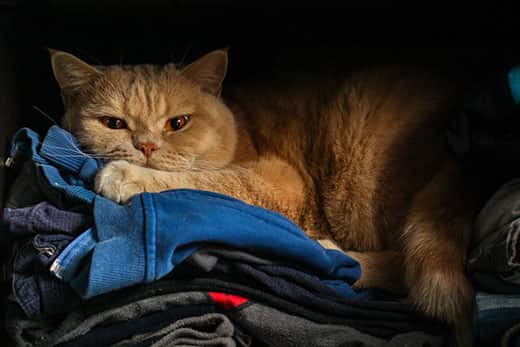
Your kitty will most likely want to sleep on your bed — but if you want them to have their own sleeping spot, choose a pet bed with flexible walls. That way, it can be placed in a small space, such as a closet, under your bed or in an empty cubby on a bookshelf. Cats love to curl up and hide in small spaces that are out of the way of foot traffic. You get to save on square footage while giving your cat a cozy place to chill out.
And to avoid spending extra, consider making a DIY cat bed with cuddly blankets or even old sweaters.
Using the Litter Box
Much like their pet parents, cats value privacy and easy access to the bathroom, explains Dr. Nina Beyer, a veterinarian at Greenfields Veterinary Associates, LLC. So, look for spaces in your apartment that offer seclusion and convenience — such as the bathroom, a utility closet or an empty lower cabinet or shelf (as long as it's well-ventilated.). Make sure to keep their litter box away from their food. Much like you, they do not like to do their business where they eat. If you have a larger apartment or house, you will likely want to have a couple of litter boxes throughout the house.


Tasty Tips
Playing
Once you have designated areas for your cat's eating, sleeping and bathroom needs, consider where to set up a play area for your kitty.

Play and exercise are very important to your cat's well-being and, luckily, don't require much space. After all, a cat can be entertained by simply playing with a ball of paper. Dedicate a small basket to your cat's favorite toys that you can stow away when company comes over.
Cats instinctively scratch and the best way to prevent them from using your furniture as a scratching surface is to give them an alternative. While cat trees and posts may be too large or cumbersome for a small apartment, you can make a DIY cat scratching post with rugs or sturdy cardboard.
Having Multiple Cats in Small Apartments
Having two cats is great because they can keep each other company. But before jumping into parenting two kitties, consider whether you can provide for the needs of both pets.
Keep in mind, for example, that you'll need to keep up with litter box duties for two. While the ASPCA recommends that every cat have their own box, it's fine for two cats to share one if you don't have space for two boxes. Just be sure to scoop out the box at least once per day, if not more.
By making good use of the space you have, you'll be able to comfortably care for your new furry family member.


Christine O'Brien is a writer, mom, and long-time cat parent whose two Russian Blues rule the house. Her work also appears in Care.com, What to Expect, and Fit Pregnancy, where she writes about pets, pregnancy, and family life. Find and follow her on Instagram and Twitter @brovelliobrien.
Related products

Precisely balanced nutrition with the delicious taste of savory minced chicken to help fuel the energy needs of cats during the prime of their life

Improves Everyday Ability to Get Up & Go

With delicious chunks in a decadent gravy

Supports energy level and beautiful fur in mature cats
Related articles
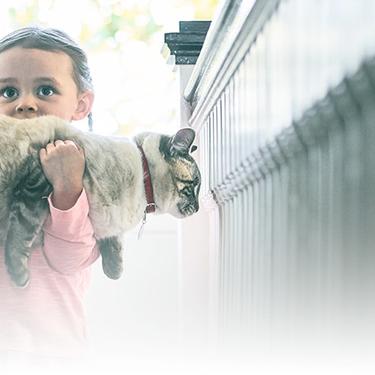
Discover how to identify cat sensitive skin and what you can do to help your cat thrive from head to paw.
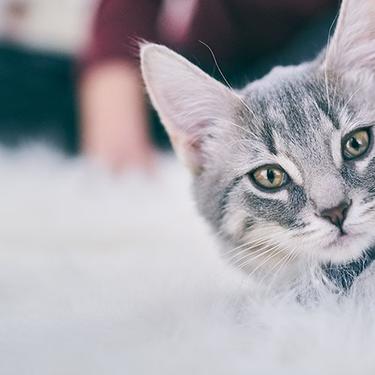
Discover the benefits of Hill's line of kitten foods and how they provide complete and balance nutrition for growing kittens.
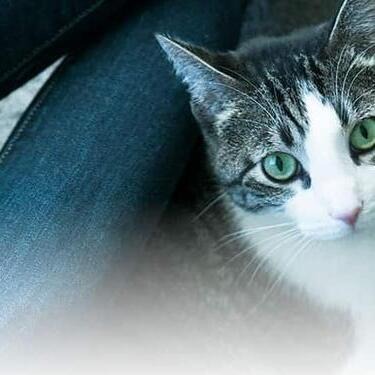
Brushing your cat's teeth is just as important as brushing your own. Learn signs or oral health problems in your cat and how to avoid them.
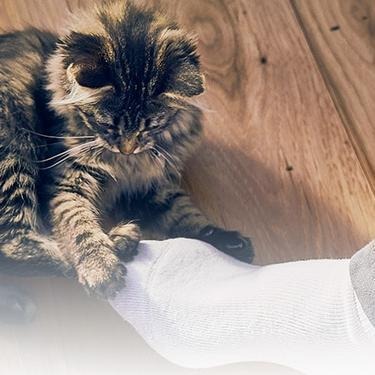
Discover which cat toys games your feline friend might like, and how they are great sources of exercise. Explore our library of articles to learn more.

Put your cat on a diet without them knowing
Our low calorie formula helps you control your cat's weight. It's packed with high-quality protein for building lean muscles, and made with purposeful ingredients for a flavorful, nutritious meal. Clinically proven antioxidants, Vitamin C+E, help promote a healthy immune system.
Put your cat on a diet without them knowing
Our low calorie formula helps you control your cat's weight. It's packed with high-quality protein for building lean muscles, and made with purposeful ingredients for a flavorful, nutritious meal. Clinically proven antioxidants, Vitamin C+E, help promote a healthy immune system.

